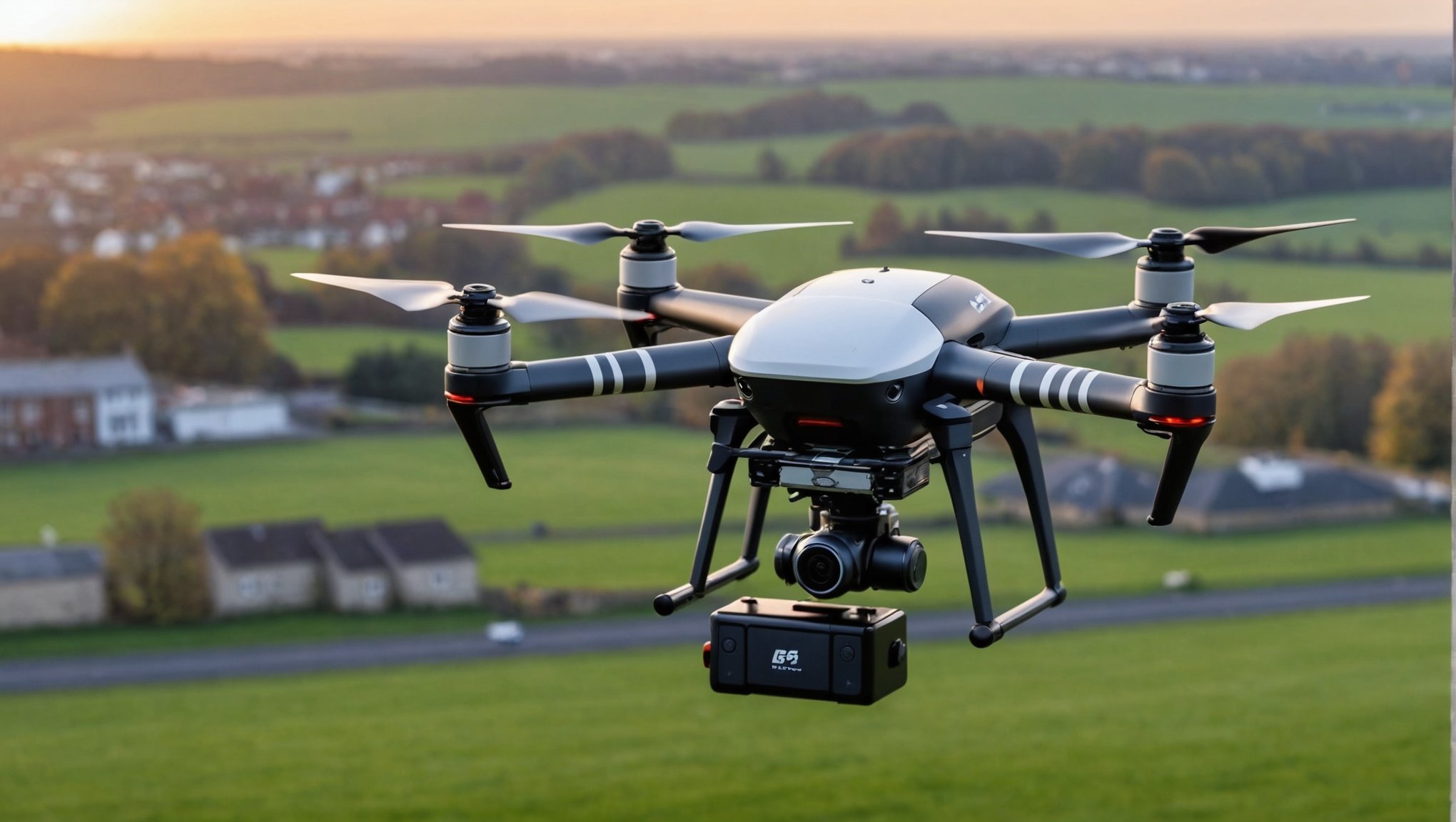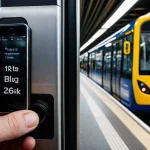Navigating Legal Hurdles: The Regulatory Landscape for Drone Delivery Systems in the UK
Understanding UK Drone Laws and Regulations
When it comes to launching a drone delivery service in the UK, complying with the country’s stringent drone laws is not just a necessity, but a non-negotiable aspect of operations. The Civil Aviation Authority (CAA) is the governing body that oversees these regulations, ensuring that all drone activities are conducted safely and legally.
Key Regulations for Drone Operators
Drone operations in the UK are categorized based on the weight and intended use of the drones. For commercial operations, such as drone delivery services, several key regulations must be adhered to:
Topic to read : Essential Tactics for Creating an Impactful Brand Ambassador Program in the UK
- Visual Line of Sight: Drone operators must maintain a direct visual sight of the drone during flights. However, new rules introduced by the CAA now allow for beyond visual line of sight (BVLOS) flights in certain atypical air environments, which is a significant advancement for infrastructure inspections and other specialized operations[4][5].
- Altitude Restrictions: Drones must stay below 400 feet to avoid interfering with other aircraft.
- Restricted Areas: Drones must avoid flying over restricted areas, such as military bases, airports, and other sensitive zones.
- Risk Assessment: Higher-risk activities fall under the specific category, which requires a detailed risk assessment before operations can commence[1].
Categories of Drone Operations
Open Category and Specific Category
Drone operations are divided into two main categories:
- Open Category: This is for low-risk operations that do not require prior authorization but must still comply with basic safety rules. This category is suitable for most recreational and some commercial drone uses.
- Specific Category: This category is for higher-risk activities that require a detailed risk assessment and operational authorization from the CAA. Drone delivery services often fall into this category due to the complexity and potential risks involved[1].
Remote Pilot and Operator Responsibilities
The success and safety of drone delivery services heavily depend on the responsibilities of both the remote pilot and the drone operator.
Also to discover : Essential Elements for Cultivating a Robust Startup Ecosystem in the UK
Remote Pilot Responsibilities
- Training and Permissions: The remote pilot must undergo appropriate training and obtain the necessary permissions to operate the drone.
- Safe Operation: The remote pilot is responsible for the safe operation of the drone during flights, ensuring compliance with all relevant regulations[1].
Drone Operator Responsibilities
- Fitness for Flight: The drone operator must ensure that the drone is fit for flight, conducting regular maintenance checks.
- Regulatory Compliance: The operator must follow all regulations and maintain detailed flight logs.
- Insurance and Liability: Commercial drone operators must have appropriate insurance coverage to protect against potential liabilities, including third-party damage and injury[1].
Insurance and Liability
Insurance is a critical component of operating a drone delivery service in the UK. Here are some key points to consider:
- Comprehensive Coverage: Ensure that your insurance policy covers all aspects of your delivery service, including damage to property, injury to third parties, and any other potential liabilities.
- Legal Requirement: Having liability insurance is not just a best practice but a legal requirement for commercial drone operations.
Navigating the Legal Landscape with the CAA
Engaging with the Civil Aviation Authority (CAA) is essential for starting and maintaining a compliant drone delivery service.
Obtaining Necessary Permissions
Before launching your service, you must obtain the required permissions from the CAA. This typically includes an Operational Authorization, which is mandatory for commercial drone operations. The CAA may also require additional permissions based on your specific operations and the areas you intend to operate in[1].
Compliance with Safety Standards
Ensure that your drone model and operations comply with the CAA’s safety standards. This includes adhering to airspace restrictions, maintaining safe distances from people and property, and conducting regular maintenance checks. Compliance is not only a legal requirement but also crucial for ensuring the safety and reliability of your service[1].
New Rules and Innovations in Drone Operations
Recent developments in the UK have introduced new rules and innovations that are set to transform the landscape of drone operations.
Beyond Visual Line of Sight (BVLOS) Flights
The CAA has introduced new rules allowing drones to fly beyond the visual line of sight (BVLOS) in atypical air environments. This is particularly beneficial for infrastructure inspections, such as checking power lines, wind turbines, and site security. Companies like National Grid and sees.ai are already leveraging these new rules to conduct nationwide aerial inspections from central control rooms[3][4][5].
Regulatory Innovation Office (RIO)
The UK government has launched the Regulatory Innovation Office (RIO) to support innovative businesses, including those in the drone sector. The RIO aims to speed up regulatory approval and cut ‘red tape,’ making it easier for businesses to bring innovative products and services to market. This initiative recognizes the benefits of autonomous technologies like drones and aims to provide the necessary regulatory support to enable their broader use[2].
Practical Insights and Best Practices
To ensure the smooth and compliant operation of your drone delivery service, here are some practical insights and best practices:
Risk Assessment and Planning
- Detailed Risk Assessment: Conduct a thorough risk assessment for all operations, especially those falling under the specific category.
- Operational Planning: Plan your operations meticulously, considering all potential risks and mitigations.
Training and Competence
- Remote Pilot Training: Ensure that all remote pilots undergo comprehensive training and hold the necessary certifications.
- Operator Competence: Ensure that drone operators are competent in maintaining the drones and adhering to all regulations.
Continuous Monitoring and Optimization
- Data Analytics: Use data analytics to optimize routes, reduce operational costs, and enhance service efficiency.
- Regular Reviews: Regularly review your processes and implement changes to stay ahead in the competitive market[1].
Table: Comparison of Key Regulations and Innovations
| Regulation/Innovation | Description | Impact on Drone Delivery Services |
|---|---|---|
| Visual Line of Sight | Must maintain direct visual sight of the drone. | Ensures safety but limits operational range. New BVLOS rules expand capabilities. |
| Altitude Restrictions | Must stay below 400 feet. | Prevents interference with other aircraft. |
| Restricted Areas | Avoid flying over restricted areas. | Ensures safety and security. |
| Risk Assessment | Detailed risk assessment required for specific category operations. | Ensures safety and compliance. |
| BVLOS Flights | Allows drones to fly beyond visual line of sight in atypical air environments. | Enhances operational capabilities for infrastructure inspections and other specialized operations. |
| Regulatory Innovation Office (RIO) | Supports innovative businesses by speeding up regulatory approval. | Facilitates the broader use of autonomous technologies like drones. |
| Insurance and Liability | Comprehensive insurance coverage is mandatory. | Protects against potential liabilities. |
Quotes from Industry Experts
- Sophie O’Sullivan, Director of Future of Flight at the UK Civil Aviation Authority:
“As the potential for drone applications continues to expand, our new policy paves the way for new ways drones will improve everyday life. It not only enhances the operational capabilities of drones, but also promises widespread societal benefits across different sectors.”[5] - John McKenna, CEO of sees.ai:
“This new policy paves the way for sees.ai and National Grid Electricity Transmission to conduct aerial inspection, survey, and rapid response work from a central control room. This ground-breaking innovation will help National Grid fulfil its commitment to providing clean, fair, and affordable energy to its customers.”[4] - Kathryn Fairhurst, Overhead Line Operations Director at National Grid:
“Deploying this groundbreaking initiative at scale, and ensuring it complements our existing tools and processes, will help us meet the enormous challenge of rewiring the network by enabling our skilled lineworkers to focus on their specialist skills rather than collection of data.”[3]
Detailed Bullet Point List: Steps to Launch a Compliant Drone Delivery Service
- Select the Right Drone Model:
- Choose a drone model that complies with CAA safety standards.
- Ensure the drone is suitable for the intended use (e.g., payload capacity, range).
- Understand and Adhere to Drone Laws:
- Familiarize yourself with the open and specific categories of drone operations.
- Ensure compliance with visual line of sight, altitude restrictions, and avoidance of restricted areas.
- Obtain Necessary Permissions:
- Secure an Operational Authorization from the CAA.
- Obtain any additional permissions required for your specific operations.
- Ensure Remote Pilot and Operator Competence:
- Train remote pilots and ensure they hold necessary certifications.
- Ensure drone operators are competent in maintaining the drones and adhering to regulations.
- Conduct Detailed Risk Assessments:
- Perform thorough risk assessments for all operations, especially those in the specific category.
- Plan operations meticulously, considering all potential risks and mitigations.
- Secure Comprehensive Insurance Coverage:
- Obtain liability insurance that covers all aspects of your delivery service.
- Ensure the policy includes coverage for third-party damage and injury.
- Monitor and Optimize Operations:
- Use data analytics to optimize routes and reduce operational costs.
- Regularly review processes and implement changes to stay competitive.
- Engage with Regulatory Bodies:
- Work closely with the CAA to ensure compliance with all regulations.
- Stay updated with new rules and innovations, such as those introduced by the RIO.
Launching a drone delivery service in the UK involves navigating a complex regulatory landscape, but with the right approach, it can be both compliant and successful. By understanding and adhering to the regulations set by the CAA, ensuring the competence of remote pilots and operators, and leveraging new innovations and rules, you can establish a safe, efficient, and reliable drone delivery service. The UK’s regulatory environment is evolving to support the growth of drone technology, and businesses that stay informed and adapt will be at the forefront of this innovative sector.






